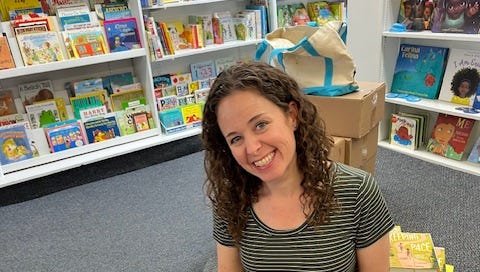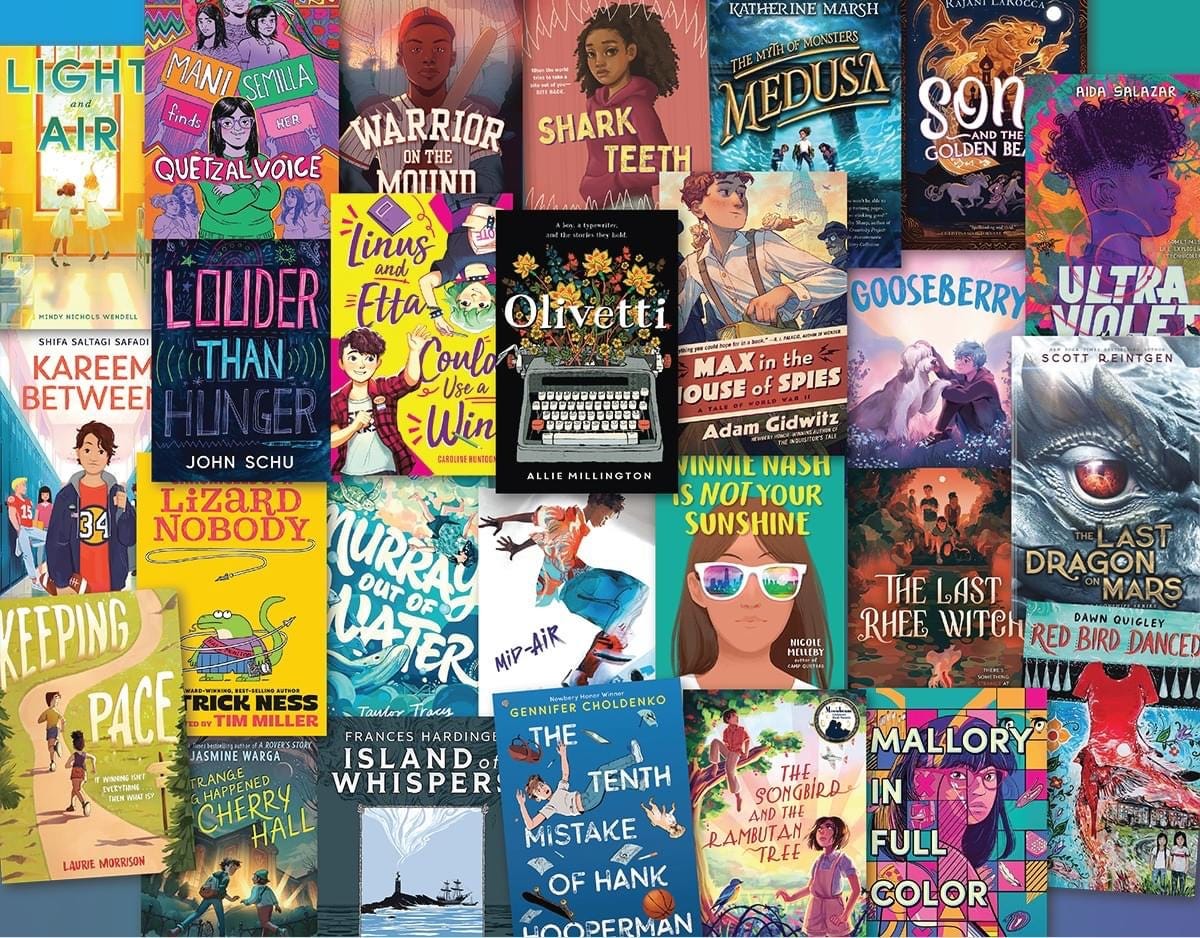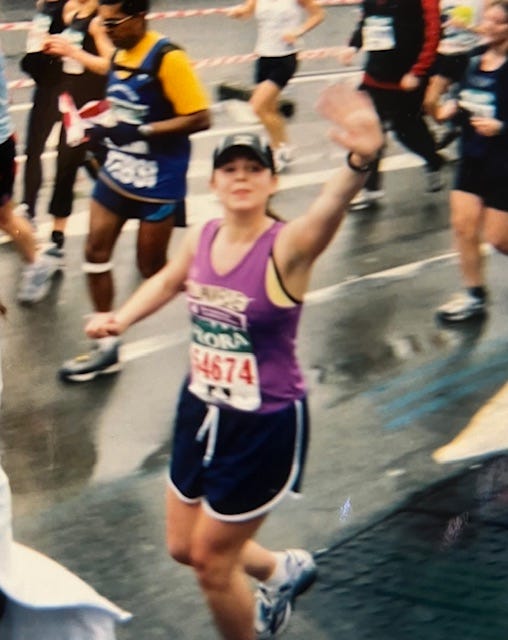How distance running helped me figure out my life (and a book, which turns one today!)
Celebrating KEEPING PACE'S first birthday and sharing the story of how I (briefly) became a marathon runner, and distance running changed my life.
Dear friend,
It’s been a while! I wish I could write a newsletter every month—or even once a quarter—but alas, not in this current season of my life. More this summer, I hope? But today is special because it marks the one-year anniversary of my fifth middle grade novel, Keeping Pace, so here I am popping into your inbox at long last.
Last year, I wrote an essay about how marathon training got me through my tumultuous twenties and why I made the main character of Keeping Pace a distance runner like I used to be. I’d hoped some impressive site with lots of subscribers and page views would publish the essay when Keeping Pace first came out, and unfortunately, the essay didn’t get placed anywhere. But that just means I can place it myself, right here in this newsletter as a way to honor Keeping Pace’s first birthday!
Before I share that piece, though, I want to tell you that Afoma Umesi and Evelyn Schwartz at Reading Middle Grade created a terrific discussion guide for Keeping Pace, which includes lots of great questions curricular connections, activities, and more. Afoma surprised me by creating a fabulous book trailer for the book, too.
And speaking of surprises, it would be hard to overstate how surprised I was when I got the news that Keeping Pace was one of School Library Journal’s best middle grade books of 2024. (It didn’t even get reviewed in SLJ! I checked A LOT of times, but that did not result in a review appearing—go figure—and I had no idea it was possible for a book to be chosen for a best-of list by a trade review publication that hadn’t reviewed it! BUT IT WAS!) As it happens, this week is National Library Week1—a time to celebrate libraries and all they offer to readers and communities—and libraries are under attack right now, as I’m sure you know. I’m very grateful that the librarians who put together this list decided to include my book . . . and very grateful that the list includes so much beautiful, necessary diversity at a time when we all need to uplift and defend stories by marginalized creators.
My other writing news is that I’m in the midst of edits for my next upper middle grade novel—a book that includes all the things I love most wrapped up together in (unconventional and wildly challenging but deliciously fun) book form. I took a big ole swing with this one, and drafting it was a pretty epic feat, but it has made me laugh so much and brought me so much joy. Which I’ve needed! I think the announcement should run very soon, so stay tuned.
And now, here are my slightly updated year-old thoughts about how distance running and Keeping Pace. Thanks for helping me celebrate one year of Grace and Jonah. I sure love those two, and I’m thrilled that many readers have, too. If you haven’t checked it out yet, I hope you will now! And as always, I’d really appreciate online reviews if you get a chance, to help spread the word.
Love, Laurie
How Running Marathons Helped Me Hear Myself
During my first year out of college, the New York City Marathon course went right past the tiny Upper East Side apartment I shared with two friends.
I knew nothing about marathons except that 26.2 miles sounded like an unfathomably long distance to run. I wouldn’t have gone out of my way to be a spectator. But since my roommates and I were boxed in by road closures and couldn’t go anywhere else, we went downstairs to check out the action.
Our apartment was on First Avenue, around the 18th mile of the race, and the elite runners had flown by a couple of hours before we went outside. The people we saw were all different ages and sizes, running at a pace I knew I could run–though only for a fraction of the distance they were going.
And I was transfixed.
I was moved to tears by the grit of these runners who propelled their exhausted bodies past us. And I was equally moved by the supportive strangers who surrounded me on the sidewalk.
Some of the spectators held signs with specific runners’ names on them, but they cheered for everyone else, too. Most of us were out there with no connection to the race, shouting for people we didn’t know at all.
I thought, “These runners are doing something amazing.” And I also thought, “I want to do this, too.”
At the time, I was in desperate need of a goal. I had a job at a nonprofit that I liked well enough, but it was only a year-long fellowship. It didn’t challenge me or fill me up the way college had, and I missed the validation I’d always gotten from school.
For my whole life, I’d seen myself as a good student and high achiever. I’d graduated summa cum laude the previous spring, but I hadn’t gotten into any of the PhD programs I’d applied to–probably because I didn’t have clear research goals or career ambitions; I just wanted to keep being a student.
I was ashamed that those programs hadn’t wanted me. I didn’t know who I was outside of school, and I didn’t know what I wanted to do next. I craved the structure and purpose that training for a marathon could offer. And, okay–maybe I also wanted strangers to cheer for me as I ran by.
A few days after watching the marathon, I joined Team in Training, a program that offers coaching and group runs for participants who raise funds for the Leukemia and Lymphoma Society. I signed up to run the London Marathon, and for the next several months, I wrote fundraising letters, ran on a treadmill before work, and met my training team for hills on Wednesdays and long runs on Saturdays.
I loved having a schedule and an objective, and I loved my new running community. But the really transformative thing about training for that marathon was this: I was not a talented runner. And I didn’t mind.
I was setting goals that had nothing to do with anyone else. I cared deeply about keeping up with my training mileage, but I didn’t care if other people lapped me on the loop in Central Park. It didn’t matter to me if I excelled by anyone else’s standards except my own.
Over the next few years, I ran more marathons. I trained for the Rock ‘n’ Roll San Diego marathon while I was living at my mom’s house in New Jersey after quitting a job I’d moved to the midwest for (and almost immediately realized was a really terrible fit) and having to move home. I trained for the Rock ‘n’ Roll Arizona marathon during my first year of grad school at a PhD program I thought was going to be exactly what I wanted…and again during my second year of grad school, as I was beginning to realize that I cared about teaching more than research and creative writing more than academic writing, so maybe this program wasn’t setting me up for a life I wanted after all.
Marathon training sustained me during those years. I had long runs on beautiful trails that gave me space to think. I had running groups that offered a sense of belonging. And I had the knowledge that I could do things that were hard–both physically and emotionally.
Distance running helped me look inward more than outward. It helped me be brave enough to stop things that weren’t working–to quit or even “fail”–because listening to my gut and leaving not-quite right circumstances was the only way I could stay on my own course toward something better.
A knee injury kept me from completing the fourth marathon I trained for, and once I became a full-time teacher and aspiring novelist, I didn’t have time for the training schedule anymore. But I think of my distance running days in the same fond way I think of old friends I’ve drifted apart from. I found marathons when I needed them, and I’ll always be grateful.
My life looks very different now than it did during my marathon era. But when I was struggling through the first draft of a novel about a competitive academic overachiever named Grace, I thought back to the day when I watched my first marathon, and something clicked. What if Grace trains for a half-marathon? I wondered, and eventually, the plot of Keeping Pace took shape.
It turned out Grace needed distance running in the same way I had needed it. Training for a half-marathon teaches Grace to focus inward as much as she focuses outward. It gives her structure, purpose, and community even though–or, indeed, because–she doesn’t objectively excel as a runner.
As I wrote Grace’s story, I found myself thinking that maybe we all need distance running–or our own version of distance running, anyway. Whether we’re almost fourteen like Grace, or twenty-two like I was when I watched those runners chug along 1st Avenue, or forty-three like I am now, there’s a lot to be said for finding something we care deeply about, regardless of our talent, and setting goals that don’t have to do with anyone except ourselves.
Want to show your appreciation and support for libraries this week AND get set up with an audiobook credit on my favorite audiobook platform, which benefits independent bookstores instead of Amazon? Check out this libro.fm offer!






Oh I can’t wait for your next book!!
Congratulations on 1 year of Keeping Pace, Laurie! I loved the book and love the story you shared here behind its inspiration. I look forward to hearing more about this upcoming book that has brought you so much joy!